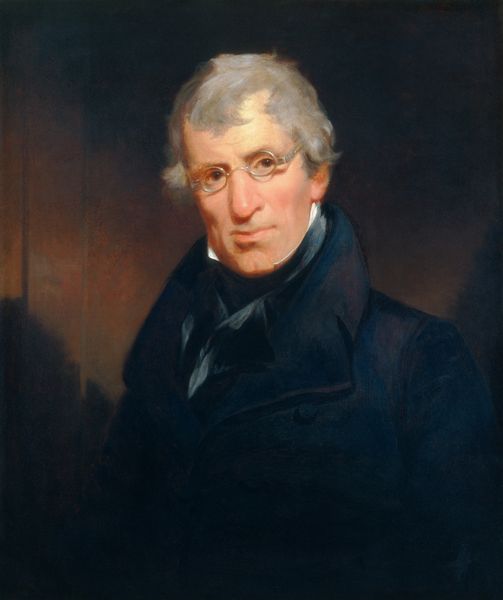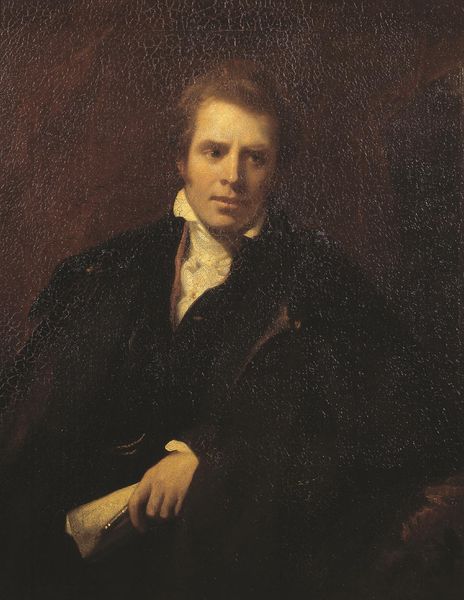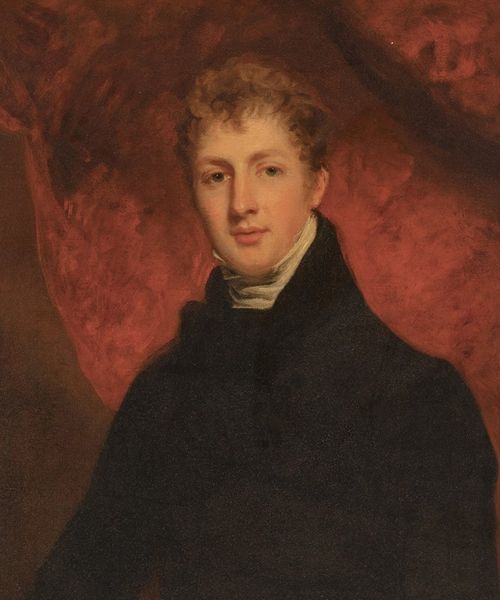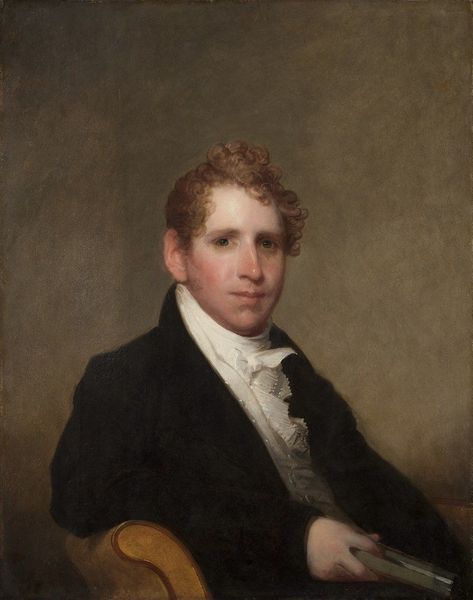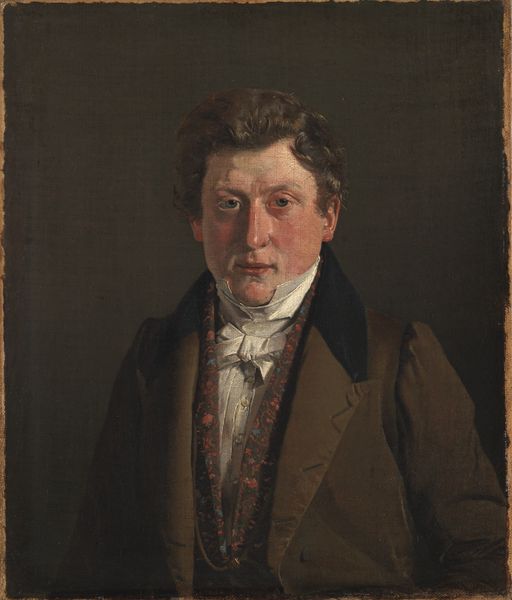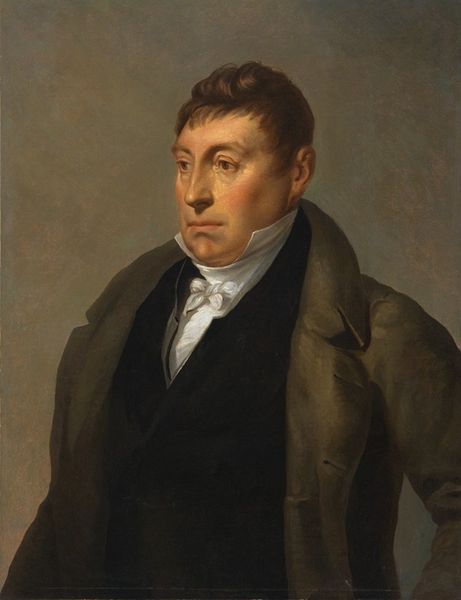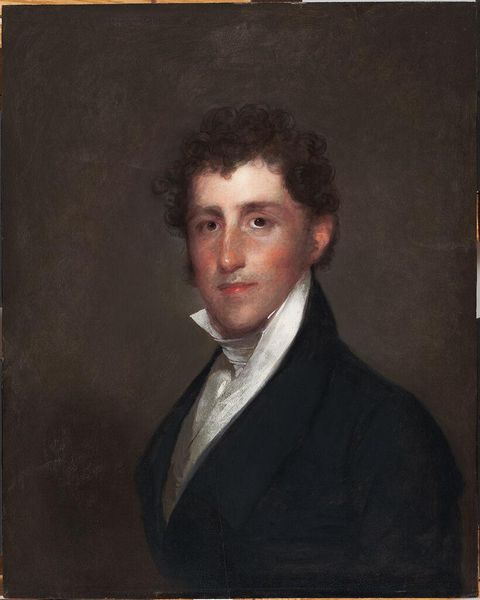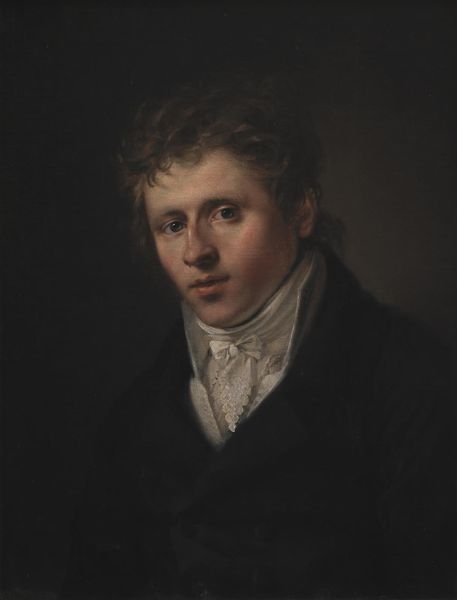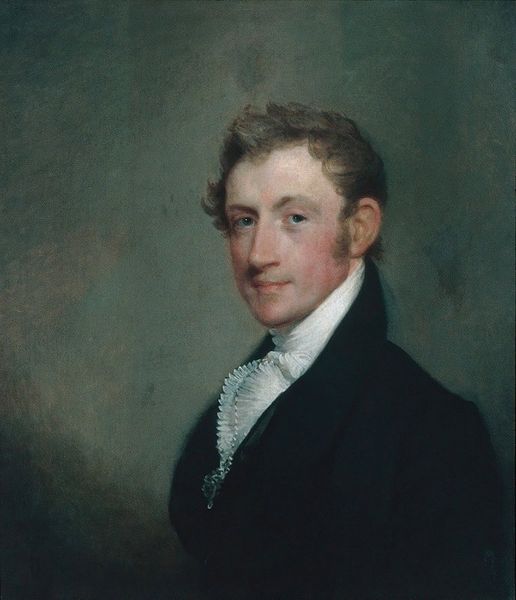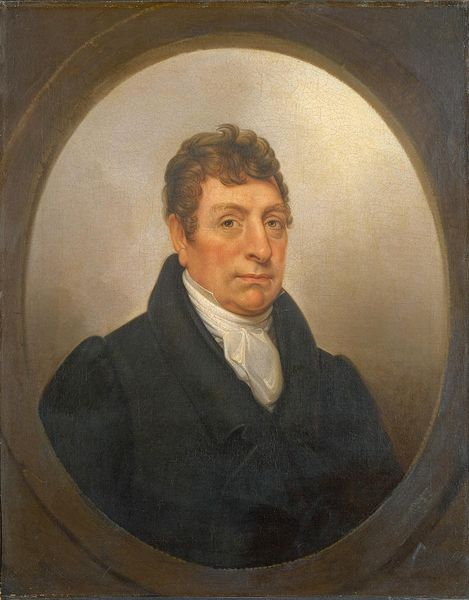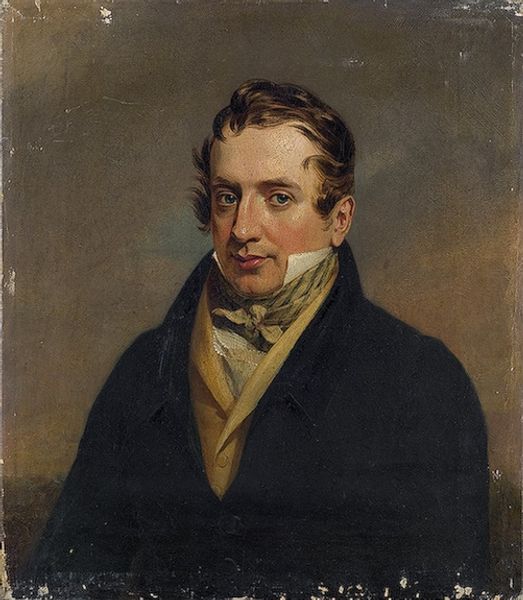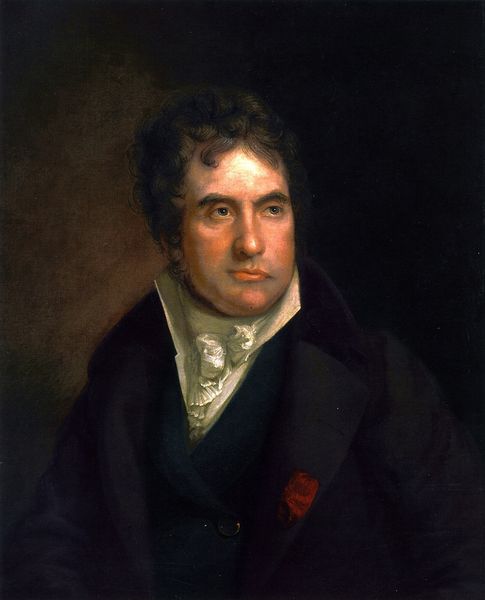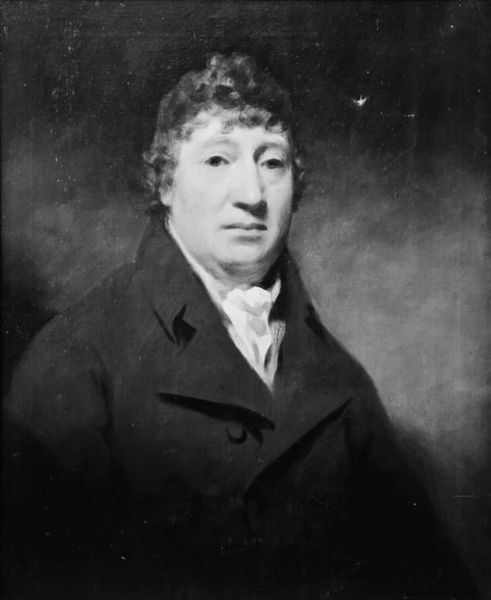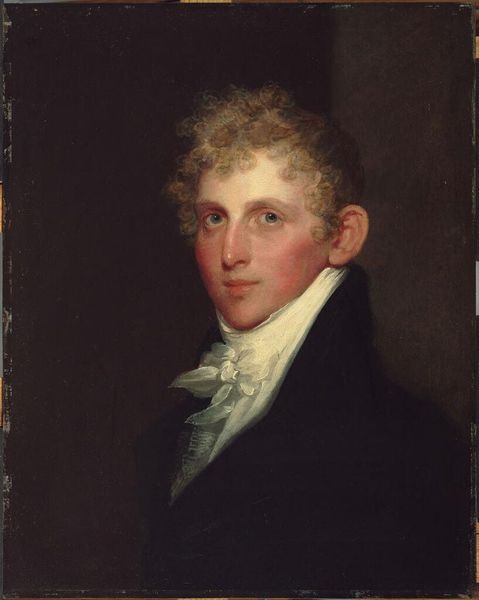
oil-paint
#
portrait
#
self-portrait
#
portrait
#
oil-paint
#
romanticism
#
realism
Dimensions: height 72 cm, width 60 cm
Copyright: Rijks Museum: Open Domain
Editor: This is Charles Howard Hodges' "Self-Portrait," made around 1825 to 1830 using oil paint. I am struck by how…ordinary he looks. No grand gestures, just a direct gaze. What can you tell me about this painting, from a historical perspective? Curator: Well, what you perceive as 'ordinary' is exactly what makes this piece so compelling! Think about the societal function of portraiture at the time. Traditionally, portraits were commissioned by the wealthy and powerful to project an image of status and authority. Hodges, however, is painting himself. Editor: So, he's controlling his own narrative? Curator: Precisely! He's presenting himself to the public on his own terms. The simplicity in the composition and his unadorned clothing suggests a rejection of the artifice of aristocratic portraiture. This was painted during a period of social and political upheaval, and even portraiture, in its own way, reflected that questioning of established norms. The direct gaze, as you pointed out, becomes almost confrontational, demanding an acknowledgement. Where does the power in the painting reside? Editor: I guess that shifts from the depicted figure to the artist as an individual, defining his own image. And, perhaps, influencing how artists after him perceived their own roles and possibilities. Curator: Exactly! And the location of the artwork impacts how it is interpreted today. Being displayed in the Rijksmuseum, a public, national institution, contributes to making Hodges into a figure who transcends his individual identity and enters into the broader social and political narrative. So how might this impact your own understanding of the piece? Editor: It makes me reconsider who gets represented, and how museums play a role in validating those representations. Thanks, I'll think more about that!
Comments
rijksmuseum about 2 years ago
⋮
The English painter Charles Howard Hodges settled in the Netherlands in 1792. He became a successful portraitist and received important commissions, such as the state portrait of Louis Napoleon in this gallery. In this self-portrait, he chose not to depict himself as a painter with easel and palette, but as a well-to-do citizen. The work was presented to the Rijksmuseum by Hodges’ daughter Emma, whose portrait hangs nearby.
Join the conversation
Join millions of artists and users on Artera today and experience the ultimate creative platform.
